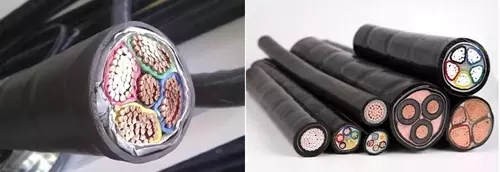Solution to the Cable Damp and Water
2022-08-11
2020-08-20
AFTER THE POWER CABLE GETS WET, IT MUST BE QUICKLY REMOVED.

(1) At present, we have adopted 8.7/10kV cables in the transformation of the urban network 6kV system. The insulation thickness of the cables is 4.5mm, and the insulation thickness of the 6/10 kV cables is 3.4mm. Due to the increase of the cable insulation thickness, the field strength is reduced, which can prevent the aging of the water tree. At the same time, because the 6kV neutral point low current grounding system is single-phase grounded, the cable has to withstand 1.73 times the phase voltage and run as required 2 hours, therefore, it is necessary to thicken the cable insulation.
(2) Since impurities and pores in the insulation are the starting point of water treeing, the quality of the cable is very important to prevent water tree aging. When purchasing a cable, you must choose a manufacturer with excellent quality. We must conduct strict tests on the samples submitted by each manufacturer and require each manufacturer to bid to select products with high quality and low price.
(3) Ensure that the cable head is well sealed. For sawn cable ends, whether they are stacked or laid, they should be sealed with plastic, and a special cable gland should be used to prevent moisture infiltration.
(4) Improve the technical quality of the construction personnel and strengthen the management of the cable head manufacturing process, which can effectively prevent the cable head from entering the water during the manufacturing process.
(5) The cable head should be made in time after the wire is laid. If the cable head cannot be made immediately due to conditions, the cable head should be sealed and wrapped and placed in the air.
(6) When the cable is directly buried, we use the new PF-R plastic pipe as the casing. The pipe is corrosion resistant, smooth inner wall, good strength and toughness, so it can greatly reduce the occurrence of damage to the outer sheath of the cable.

(8) When the cable is laid and the cable head is completed, it shall be handed over to the operation management department withstand voltage leakage test shall be done according to the regulations before it is officially put into operation, and it can be put into operation only after everything is qualified. When there is a problem with the cable during operation, the management personnel must strengthen the monitoring and deal with it in time.

Previous:How a Surge Arrester Works?




